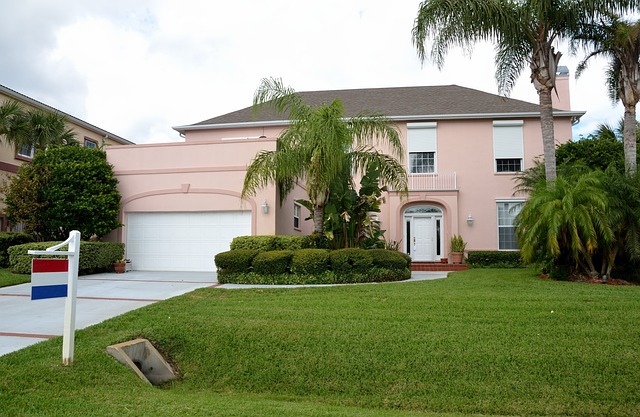Lease purchase and renting are two popular options for people looking for a place to live. While traditional renting is a common choice for many, lease purchase offers a unique opportunity for tenants who aspire to become homeowners. In this article, we will compare and contrast lease purchase with traditional renting and highlight the advantages of lease purchase for tenants.
When it comes to traditional renting, tenants pay rent each month to their landlord in exchange for the right to live in the property. While this option provides flexibility and convenience, tenants do not have the opportunity to build equity or own the property. On the other hand, lease purchase allows tenants to rent a property with the option to buy it at a later date. This option gives tenants the chance to build equity and potentially become homeowners.
For tenants who aspire to become homeowners but are not yet ready to commit to a mortgage, a lease purchase can be an attractive option. With a lease purchase, tenants can test out the property and the neighborhood before committing to buying the property. Additionally, lease purchase agreements often allow tenants to lock in a purchase price, protecting them from potential increases in property values.
Understanding Lease Purchase
A lease purchase is a type of agreement that allows tenants to rent a property with the option to buy it at a later date. This type of agreement is becoming increasingly popular among tenants who aspire to become homeowners but are unable to afford the down payment or qualify for a mortgage. In this section, we will discuss the key features of lease purchase and how it differs from traditional renting.
Key Features of Lease Purchase
Rent-to-Own Option
One of the key features of lease purchase is the rent-to-own option. This means that tenants have the option to buy the property they are renting at a later date. The terms of the agreement will outline the purchase price, the length of the lease, and the amount of the monthly rent. Tenants who choose this option will typically pay a higher monthly rent, with a portion of the rent going toward the purchase price of the property.
Option Fee
In addition to the monthly rent, tenants who choose the rent-to-own option will typically pay an option fee. This fee is paid upfront and gives tenants the option to buy the property at a later date. The option fee is typically non-refundable, even if the tenant decides not to exercise their option to buy the property.
Maintenance and Repairs
Tenants who choose lease purchase agreements are typically responsible for the maintenance and repairs of the property. This means that they will need to take care of any repairs or maintenance issues that arise during the lease period. However, some lease purchase agreements may include provisions for the landlord to cover major repairs or maintenance issues.
Purchase Price
The purchase price of the property will be outlined in the lease-purchase agreement. This price is typically determined at the beginning of the lease period and may be based on the current market value of the property. Tenants who choose the rent-to-own option will typically pay a higher monthly rent, with the possibility of a portion of the rent going toward the purchase price of the property.
Advantages for Tenants
Lease purchase agreements offer several advantages for tenants who aspire to become homeowners. For example:
- Rent-to-own option: Tenants have the option to buy the property they are renting at a later date.
- Building equity: A portion of the monthly rent may go towards the purchase price of the property, allowing tenants to build equity over time.
- Time to save for a down payment: Tenants who are unable to afford a down payment can use the lease period to save for a down payment.
- Fixed purchase price: The purchase price of the property is typically determined at the beginning of the lease period, giving tenants the opportunity to lock in a price that may be lower than the market value of the property at the time of purchase.
In conclusion, lease purchase agreements offer tenants a unique opportunity to become homeowners. By understanding the key features of lease purchase agreements, tenants can make an informed decision about whether this type of agreement is right for them.
Understanding Traditional Renting
Definition of Traditional Renting
Traditional renting is a common way for people to obtain housing without the long-term commitment of owning a property. In this arrangement, tenants pay a monthly rent to a landlord or property management company in exchange for the right to occupy a property for a set period of time, typically one year. After the lease term ends, tenants have the option to renew their lease or move out.
Key Features of Traditional Renting
One of the primary benefits of traditional renting is flexibility. Renters can move from one property to another without the burden of selling a home or dealing with the costs of homeownership, such as property taxes and maintenance. Additionally, renters are not responsible for major repairs or upgrades to the property, as those are the landlord’s responsibility.
However, traditional renting also has some drawbacks. Renters do not build equity in the property and are subject to rent increases at the end of each lease term. Furthermore, landlords have the right to terminate a lease if the tenant violates the terms of the agreement or fails to pay rent on time.
In summary, traditional renting can be a good option for those who value flexibility and do not want to commit to owning a property. However, it does not provide the long-term financial benefits of homeownership.
Comparing Lease Purchase and Traditional Renting
Financial Differences
Lease purchase and traditional renting differ in several financial aspects. In a lease-purchase agreement, a portion of the rent paid by the tenant may go toward the eventual purchase of the property. This means that the tenant is gradually building equity in the property, which can be used as a down payment when they decide to buy the property.
On the other hand, traditional renting does not offer any equity-building opportunities. The rent paid by the tenant goes towards the landlord’s income, and the tenant does not have any ownership stake in the property.
Another financial difference is the price of the property. Lease purchase agreements typically involve properties with a higher price tag than traditional rental properties. This is because the landlord is willing to sell the property to the tenant in the future, and the higher price reflects the potential appreciation in value.
Contractual Differences
Lease purchase and traditional renting agreements also differ in their contractual terms. In a lease-purchase agreement, the tenant could be obligated to purchase the property at the end of the lease term, however, this wouldn’t be true for a lease with the option to purchase, whereas in traditional renting, the tenant has no obligation to purchase the property.
Lease purchase agreements also typically have longer lease terms than traditional rental agreements. This is because the tenant needs time to build equity, save for a down payment, or repair their credit before they can purchase it.
In addition, lease purchase agreements may have more stringent requirements for the tenant, such as a higher credit score or down payment. This is because the landlord is taking a risk by selling the property to the tenant in the future, and wants to ensure that the tenant is financially stable and able to make the purchase.
Overall, lease purchase agreements offer tenants the opportunity to build equity in a property and eventually become homeowners. However, they also come with stricter requirements and a higher price tag. Traditional renting offers flexibility and lower costs, but no equity-building opportunities.
Advantages of Lease Purchase
A lease purchase is a real estate agreement that allows tenants to rent a property with an option to purchase it at a later date. This type of agreement has several advantages over traditional renting, especially for tenants who aspire to become homeowners. In this section, we will highlight some of the key advantages of lease purchase.
Potential for Homeownership
One of the main advantages of lease purchase is the potential for homeownership. With a lease-purchase agreement, tenants have the option to buy the property at a later date. This allows them to build equity in the property and work towards homeownership. Additionally, lease purchase agreements often have longer lease terms, which gives tenants more time to save for a down payment and improve their credit score.
Financial Benefits

Lease purchase also offers several financial benefits for tenants. For example, lease purchase agreements often have a fixed purchase price, which means that tenants can lock in the price of the property at the beginning of the lease. This can be especially beneficial in areas with rising property values. Additionally, a portion of the rent paid by the tenant is often credited toward the purchase price of the property. This means that tenants are building equity in the property while they rent.
Another financial benefit of lease purchase is that it allows tenants to take advantage of tax benefits associated with homeownership. For example, tenants may be able to deduct mortgage interest and property taxes on their tax returns.
Overall, lease purchase offers several advantages over traditional renting for tenants who aspire to become homeowners. By providing the potential for homeownership and several financial benefits, lease purchases can help tenants achieve their goal of owning a home.
Conclusion
In conclusion, lease purchase and traditional renting are two options available to tenants. Lease purchase provides tenants with the opportunity to own a property in the future while renting does not. However, a lease purchase comes with its own set of risks and disadvantages that tenants should consider before signing a lease-purchase agreement.
Tenants who aspire to become homeowners may find lease purchase to be a viable option. They can use the lease period to save up for a down payment, improve their credit score, and build equity in the property. Lease purchase also provides tenants with the opportunity to lock in a purchase price, which can be advantageous in a rising housing market.
However, tenants should be aware that lease purchase agreements can be complex and may require legal advice. They should also consider the risks involved, such as changes in property value, unexpected repairs, and the possibility of losing their investment if they are unable to secure financing for the purchase.
Overall, tenants should carefully weigh the advantages and disadvantages of lease purchase and traditional renting before making a decision. It is important to consider their financial situation, long-term goals, and personal preferences before signing any agreement.
I’m real estate investor, self-improvement coach, author, and publisher, Don Mayer. I would love to connect further with you to help you achieve your goals. If you are interested in learning more about lease purchasing a home, please take a look at my entry-level rent-to-own guide “The Ultimate Home-Finders Workbook”, and consider coming aboard and learning the steps to moving into a home of your own!

